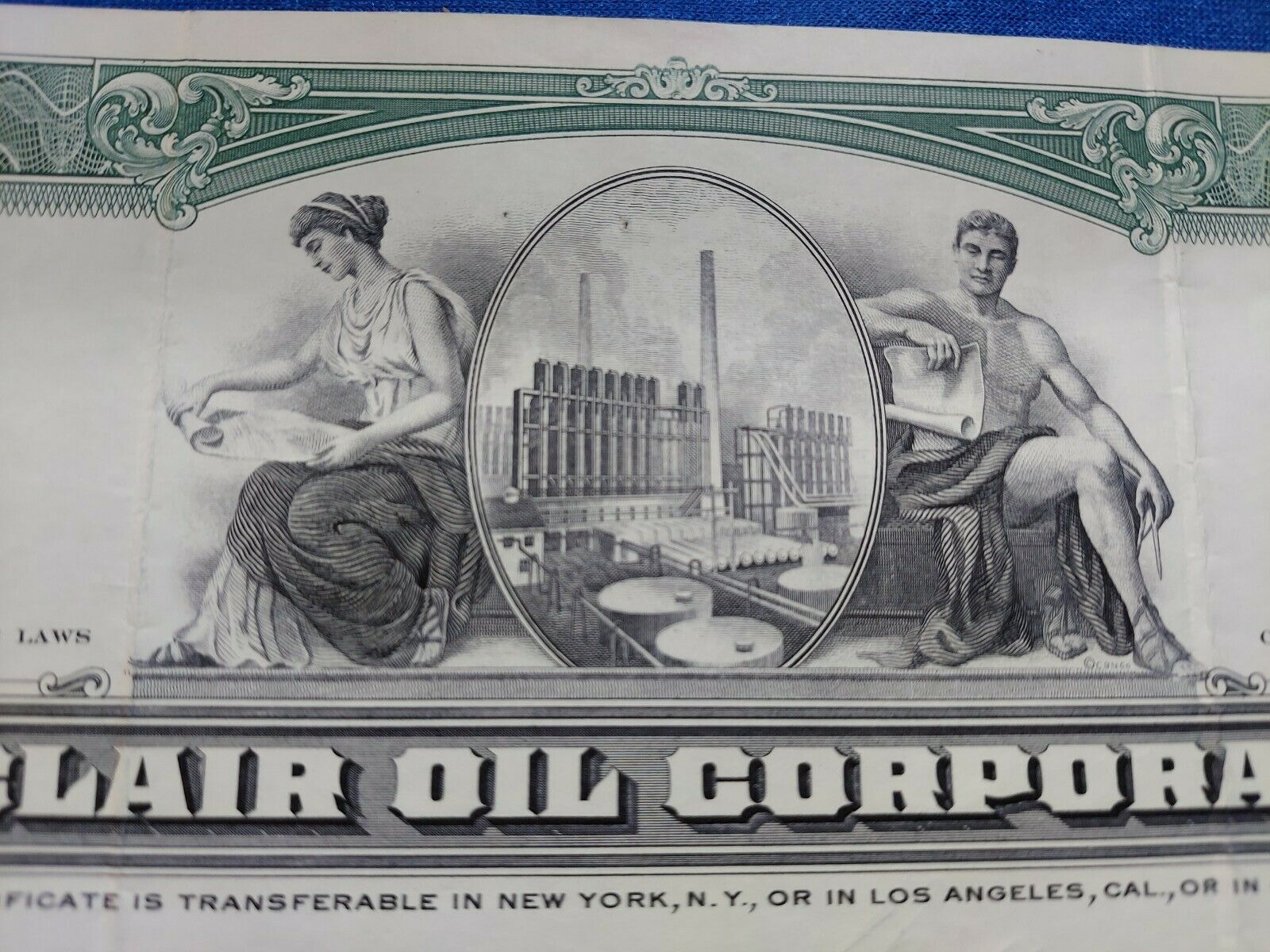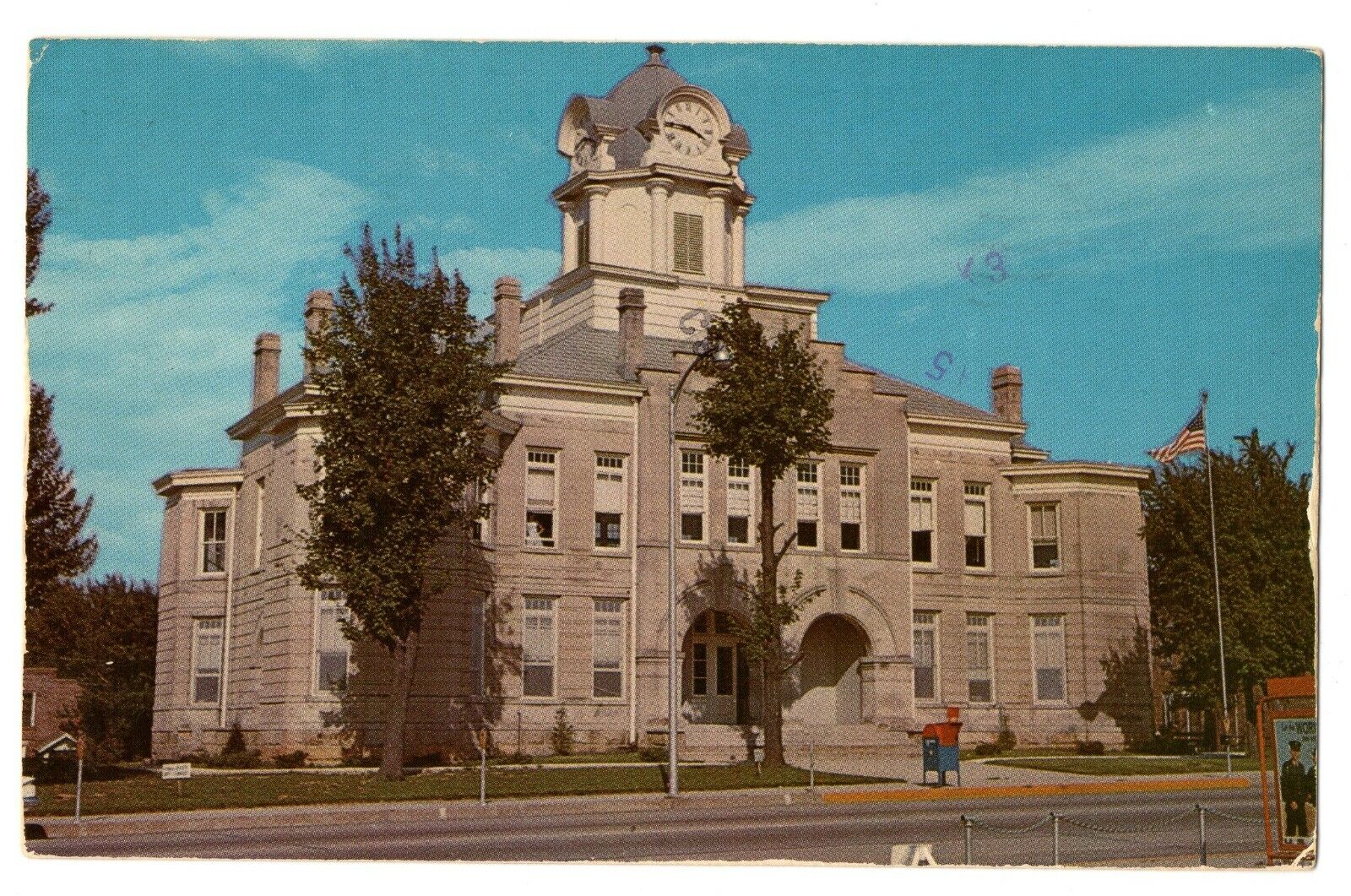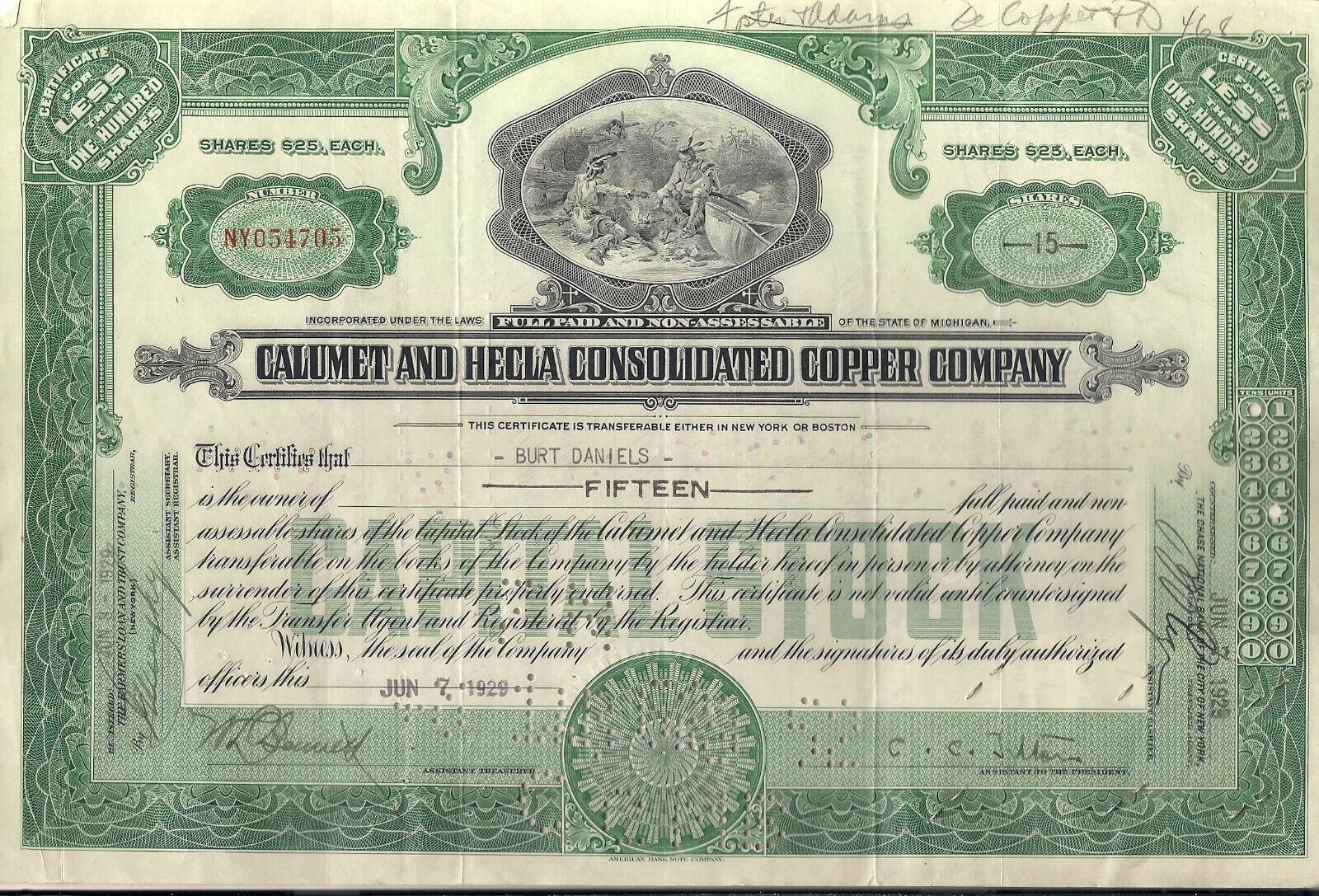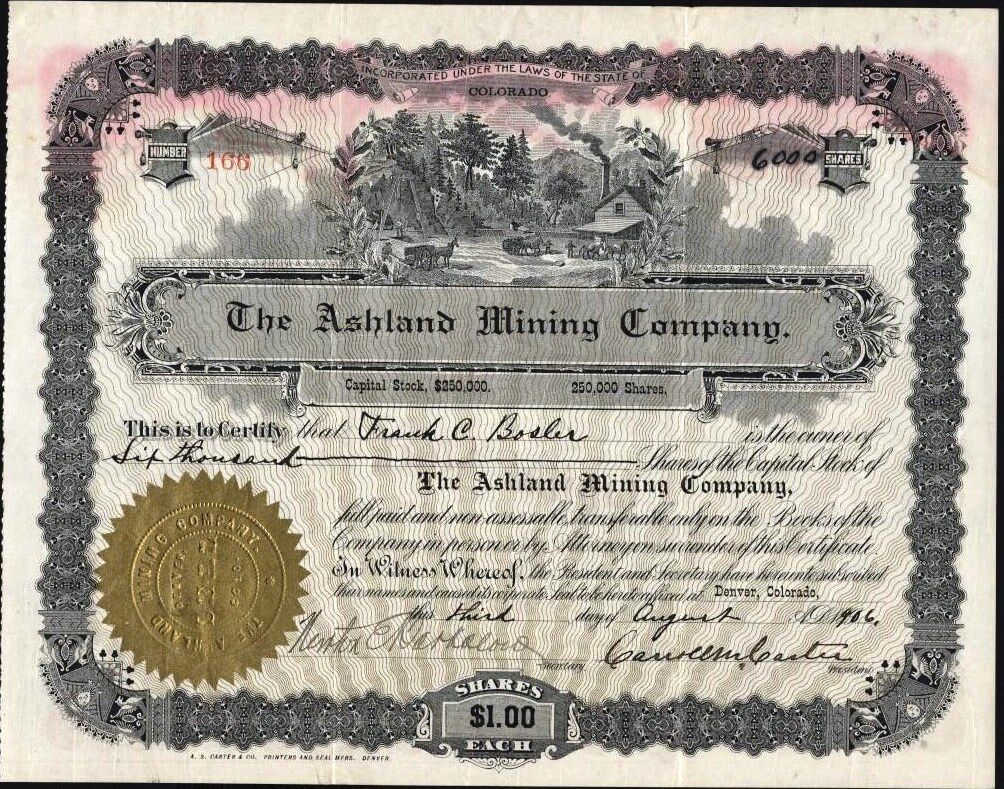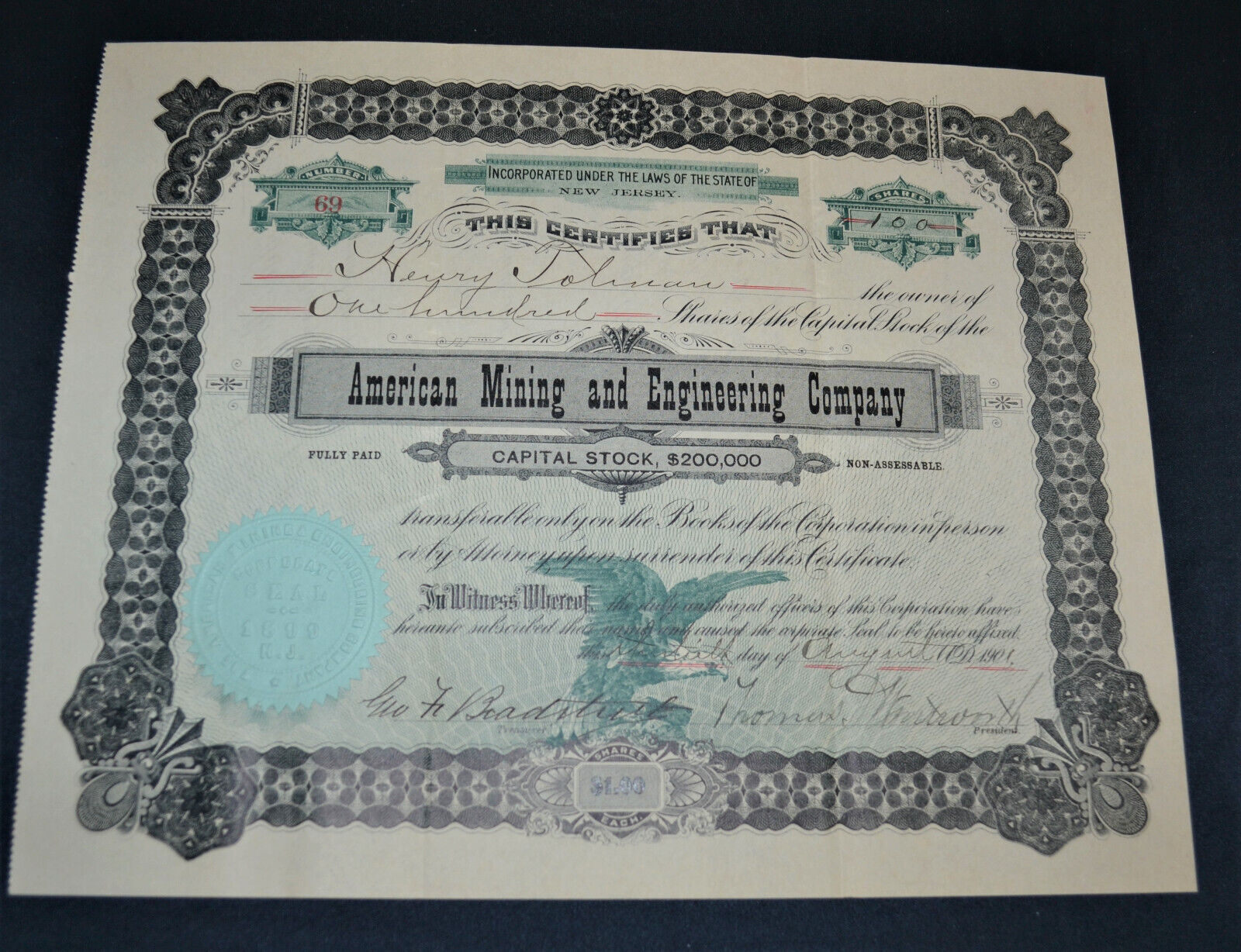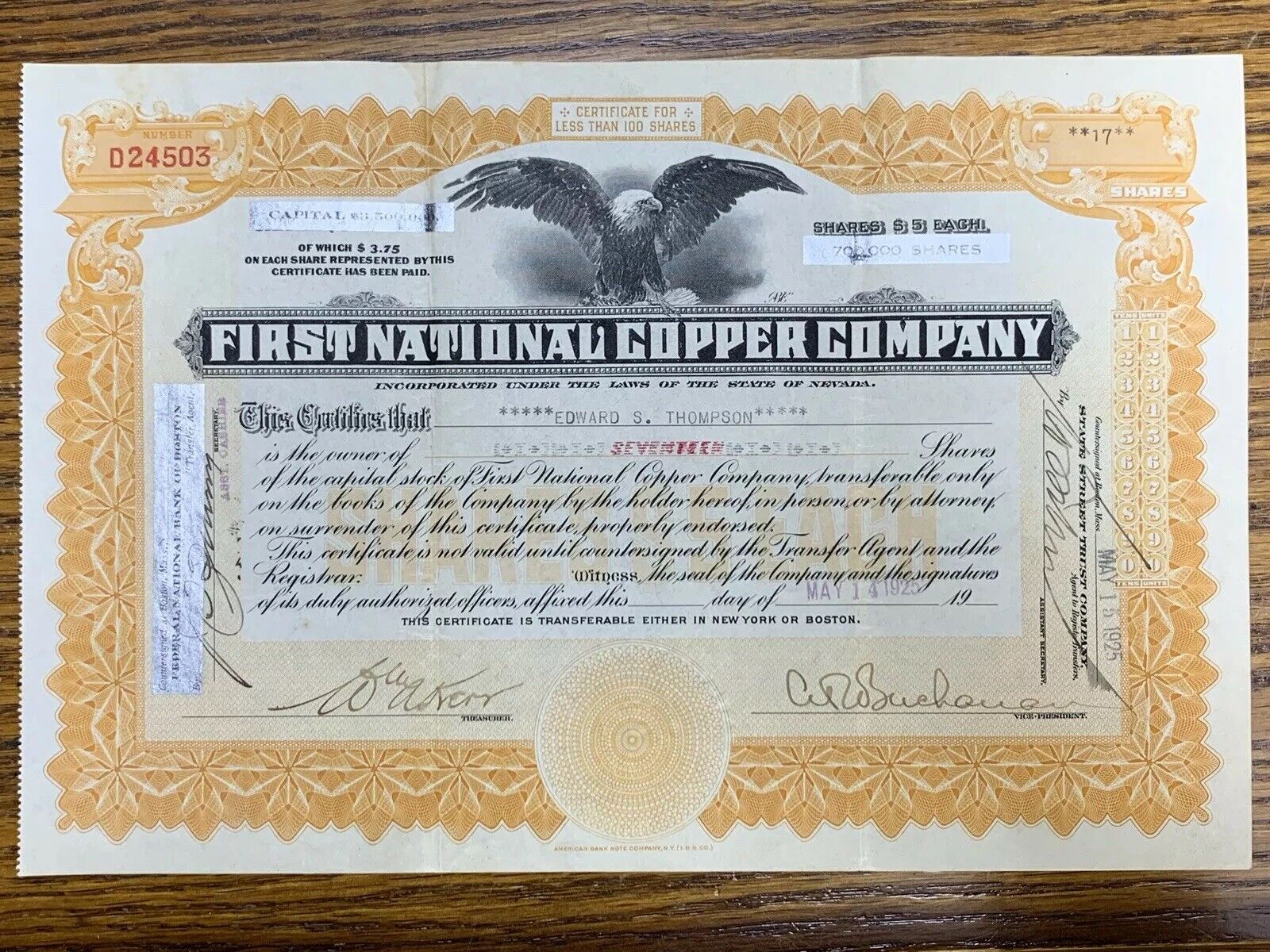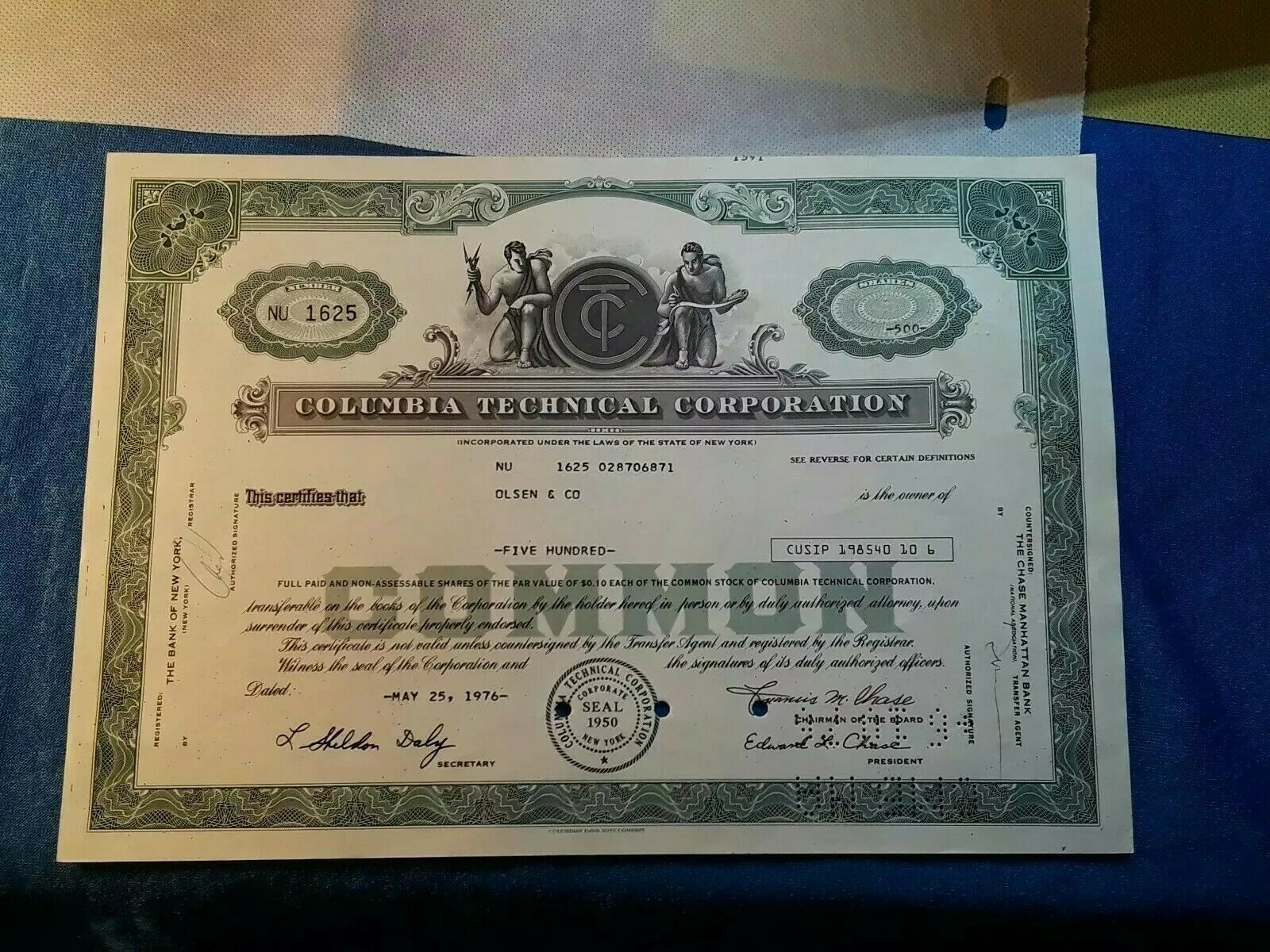-40%
Empire Consolidated Quicksilver Mining Company 1901 antique stock certificate
$ 18.45
- Description
- Size Guide
Description
Up for consideration is the Empire Consolidated Quicksilver Mining Company stock certificate from 1901:#393
Issued to Albert Vermaas for 10 shares on December 31, 1901
Signed by William H. Dow as president and J. H. Kimball as treasurer
Incorporated in New Jersey
Capital stock of ,000,000
Printer: John A. Lowell & Company, Boston.
Uncancelled
Certificate in good condition
The Empire Consolidate Mining Company owned and operated quicksilver (mercury) mines in Colusa and Lake Counties, California. In about 1900 the Empire Consolidated Mining Company purchased over 3,800 acres of mining properties, including the existing Sulphur Banks Mine, Empire Mine, Abbott Mine, Central Mine and Sulphur Panics Mine. In addition to mercury ore, these mining properties produced borax, sulfur, cinnabar, and high-grade oil beginning in the 1860s and into the 1960s. The mercury was shipped from the mines in iron flasks weighing about 90 pounds each and containing about 76 pounds of mercury. The closest rail service at this time was 45 miles away in Calistoga, and the wagon trip over the crest of Mt. Saint Helena via the Lawley Toll Road to the rail head could take a week or more.
Mercury (quicksilver) was used for extracting gold from ore in a process of amalgamation and distillation. The mixture of mercury and gold would then be recollected and heated until the mercury boiled away. A simple still like those used to make alcohol would draw away the vaporized mercury, possibly collecting it for reuse, leaving mostly pure gold. Though the gold would have to be refined later for greater purity, the amalgamation with mercury allowed the efficient extraction of gold from poor-quality ores that were not economical by other means. Unfortunately, a large amount of the mercury vaporized in the mining of gold and silver eventually found its way to the atmosphere or was dumped in waterways with other mine waste. It is estimated that about half of the mercury produced in human history was used in mining operations. Though widespread use of mercury in mining ceased in the 1960s, the environmental contamination from those activities continue to show elevated levels of mercury related to 19th-century mining activity in quicksilver mining districts and ongoing leaks from abandoned mines.

